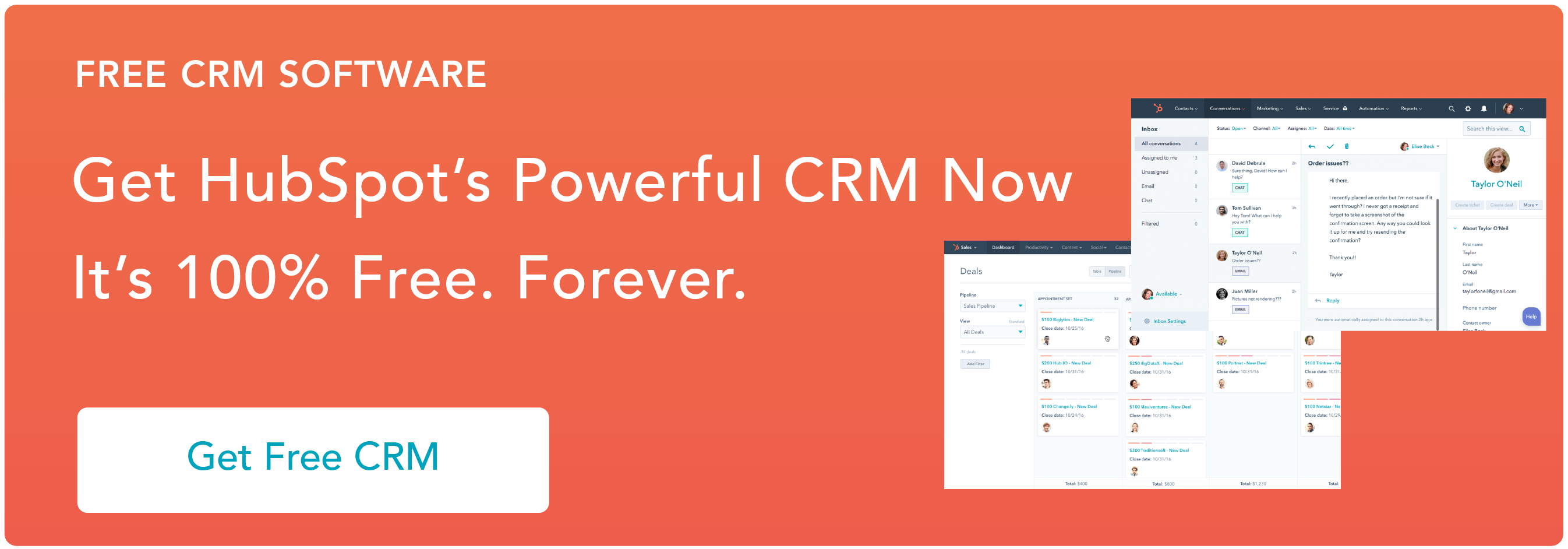The Evolution of the CRM
Once upon a time, the only way to know how your customers were doing or if prospects were ready to buy your product or service was to chat with them directly – face-to-face, over the phone, or eventually via email.
Organized businesses had a ledger or Rolodex to note down customer information, and with time these might have become spreadsheets.
This could have been a functional strategy if you had just a few customers. But as your business scaled and complexity grew, it was a recipe for a lot of headaches and very little free time.
This started to change in the 1970s with mainframe systems to automate sales, but this was still limited to categorizing customers in spreadsheets and lists.
In the 1980s, database marketing entered the scene, applying statistical methods to analyze and gather customer data.
But it wasn't until cloud technology was on the rise that CRM made giant leaps forward. Not only did this generate huge cost reductions and make CRM accessible for all types of businesses, but it also enabled organizations to instantly update customer data on multiple devices and access the system anywhere.
In the last few years, the main changes to the CRM haven't necessarily been around contact management. The best CRMs have evolved to integrate the CRM with every area of an organization, make it more collaborative, and offer something for everyone.

How CRM Impacts Every Team
Salespeople have traditionally been the core users of CRMs, and it's still the software they use most in their work to manage contacts on their journey toward and beyond conversion. However, CRM has much more to offer sales beyond effective contact management.
Sales teams can use CRM systems to:
- Manage the complete sales pipeline
- Track deals at every stage and automate tasks
- Get automated insights on every contact and company record
- Track emails and automate follow-ups
- Enable prospects to schedule meetings in their calendar
However, the CRM now plays a role before a lead even gets to sales. Marketers can fill the CRM with valuable data by creating forms that enrich contact records, collecting and interacting with leads via live chat and bots, sending personalized emails at the right time, and automatically collecting engagement data.
This means the moment a lead becomes sales-qualified, your sales reps won't be dealing with a ghost. They will know who they are, their communication preferences, and background information about their business, goals, and pain points.
If marketing prepares the CRM for sales, then sales populates the CRM with the background information customer service needs to do their best work. Service specialists can then use the CRM to view support tickets in tandem with contact records, know the full story for every inquiry, and keep all the right people up-to-date.
Meanwhile, operations managers can use the CRM to implement seamless and data-driven processes by connecting apps via third-party or native integrations, automating tasks based on deal stage or contact actions, and instantly distributing leads.
And as a business owner, the CRM is a first port of call for insights into business performance and to manage multiple hats as a solopreneur.
CRMs may have been designed for sales, but they now deliver the greatest impact when used collaboratively by an entire organization.
How Your Sales Strategy Can Evolve with Your CRM
What does CRM's evolution mean for your sales strategy? In short, it means there's plenty of scope for your own strategy to evolve and adapt too.
To future-proof your sales team, create the most impact, and work more effectively, here are the best practices to implement.
1. Share Your CRM with Marketing and Customer Service
Your CRM should be a collaborative place that your entire organization contributes to and benefits from.
As part of your sales strategy, encourage the other teams in your organization to access and get familiarized with your CRM. Together you can build the most valuable customer data portal and store all interactions in one place, no matter the stage of the customer journey they happen.
2. Centralize All Data in Your CRM
A strong contact management strategy starts with ensuring all contact data is actually in the CRM. Are there any apps or databases where contact data is siloed?
Common data silos include webinar sign-ups, event attendees that opted in via another app, contact attributes tagged in support tickets, customer categories from your accounting app, etc. With tools like Operations Hub, you can create integrations between all of your business apps and your CRM – as well as well-documented contact management processes for your team to follow – you can avoid data silos and create the most connected and reliable data ecosystem.
3. Harness the Full Potential of Automation
The best CRM systems offer plenty of opportunities for sales automation. Systems like HubSpot automatically:
- Bring new contacts into the CRM and build an organized contact record.
- Populate the contact record with data on how they have already engaged with your website, emails, and content.
- Enrich the contact record with deeper insights about business size, location, industry, estimated turnover, social media profiles, and more.
That said, there's a lot more your sales team can do with automation. Some of the most powerful ways to use automation as a sales team include:
- Setting up personal email sequences to nurture prospects toward buying
- Creating templates and quick-insert snippets of the email content you send most
- Enabling qualified leads to book time in your calendar
- Triggering tasks and notifications when leads take certain actions
- Calculating lead scoring and use it to determine your team's focus
Automation isn't about removing the 1-1 interactions from sales, but making more time for it. It enables reps to spend less time organizing their schedule, stay on top of their pipeline with greater ease, and quickly pick up where they left off with each person and remember who they are.
4. Integrate CRM Data with Other Apps
Your CRM is the go-to place for your organization's contact data, but with integrations, your other apps can tap into that too.
As part of your sales strategy, you can map out simple processes to integrate relevant CRM data with apps such as:
- Your live chat software
- Google Contacts or iCloud, to enrich caller ID data
- Marketing Automation apps
- Customer Service tools
- Billing and accounting software
As you optimize your sales strategy, make sure to ask: what are the most valuable connections we can set up to enrich data everywhere?
Keep in mind that there are different software integration solutions and that it's important to identify the right one for your business needs.
Overall, you need to avoid having isolated data in your apps.
Future-Proof Your Sales Strategy
CRM is no longer just about contact management, and nor does it exist in a vacuum. It now affects every area of your organization and offers something for every person in the team.
For your sales team to evolve with your CRM, remember to pivot your strategy to encompass these future-proof pillars:
- Integration – are all of your apps integrated and sharing accurate data?
- Collaboration – is your sales team working closely with marketing and service teams?
- Accessibility – can other teams in your organization access your data and insights?
As your organization scales and your networks of customer analytics grow, make sure that strong structures are in place for data to flow between apps, teams, and people. By placing your CRM front-and-center in your sales strategy, this becomes much simpler.
CRM Adoption



.jpg)
.jpg)
.jpg)